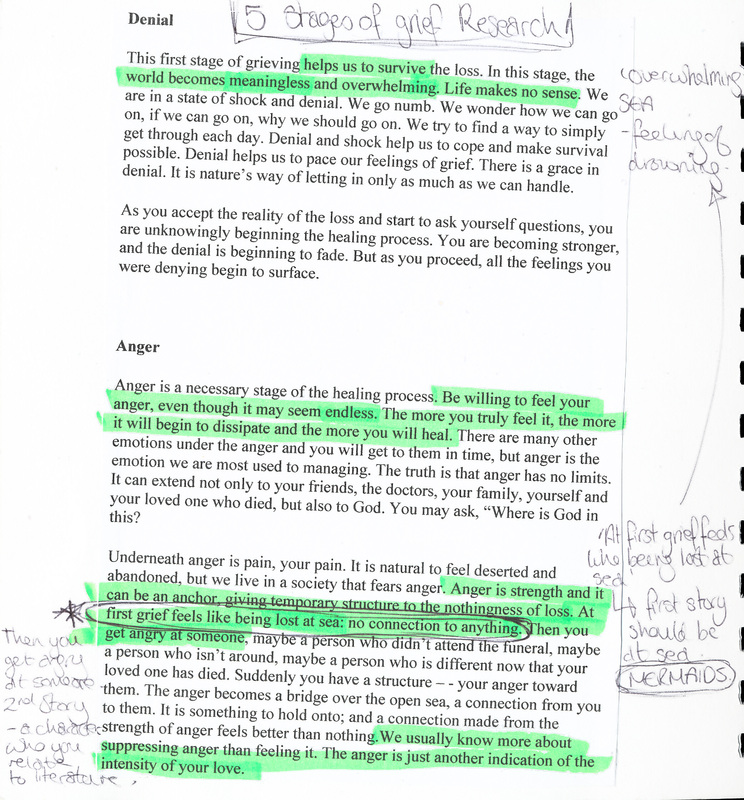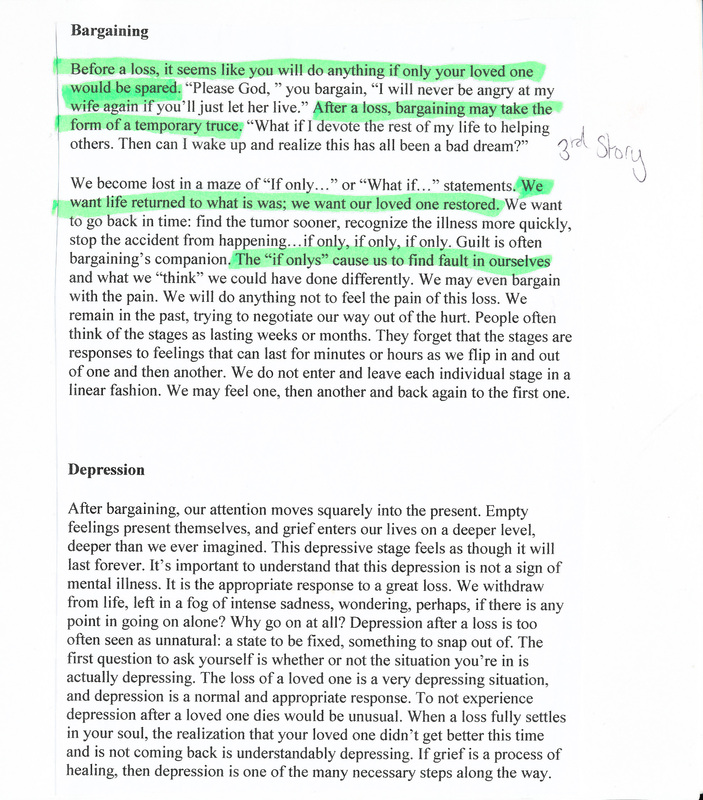A while back a friend showed me the website for Anderson M Studio:
I had already seen the Pottermore video and loved it but was excited to see a whole other collection of stop-motion videos of the same ilk. I think these guys will give me a whole lot of inspiration for my film, this was the sort of thing I imagined with the library coming to life.
These were my three favourite book art videos:
I also really like the style of this one with the way that the cut out paper falls away:
I have been researching the five stages of grief after getting feedback which suggested I could make a five episode series where each episode showed the librarian going through one of these stages and narrating it though fairytales.
The five stages of grief
The five stages of grief (Kubler-Ross Model):
· Denial (and isolation)
· Anger
· Bargaining
· Depression
· Acceptance
These stages occur when a person is faced with the reality of their impending death and applies to survivors of a loved one’s death as well.
These stages are not complete or chronological.
Not everyone feels all five responses nor will they experience them in a particular order. Some may be revisited.
The hypothesis is that the reactions to illness, death and loss are as unique as the person experiencing them.
Cultural relevance:
A dying individuals approach to death has been linked to the amount of meaning and purpose a person has found throughout his lifetime.
Perhaps because the Librarians life has been lived amongst fairytales, his approach to death is bad because he has never lived in the reality, it has always been a case of ‘a happily ever after’. There was no meaning and purpose, just stories.
Grief Communication:
Grief communication occurs in grief-stricken people, through their emotions, actions and words. Kubler-Ross believed that when a person is approaching death or going through the five stages that person wanted to review his or her life.
A review of the Librarians life would be the stories that he has read or told which is why he communicates his grief through these stories.
Debbie Messer Zlatin:
She took the focus away from how the observer deals with the dying process and tried to learn how the dying person interprets his/her own reality. She asked people to relate the story of their illness.
The death of a loved one might inspire you to evaluate your own feeling of mortality. Through each stage, a common thread of hope emerges. As long as there is life , there is hope. As long as there is hope there is life.
The model recognises that people have to pass through their own individual journey of coming to terms with death and bereavement, etc. after which there is generally an acceptance of reality, which then enables the person to cope.
Librarian has to look outside of stories to finally gain an acceptance of reality.
‘time heals’ – Theme of time running throughout the film?
Possible fairytales I could use for the five stages:
Denial - Story of mermaids. People in denial in modern day literature, they believe mermaids to be beautiful creatures. In old legend they are scarey fish that eat people. OR - The emporers new clothes.
Bargaining - The elves and the shoe maker?
*I could tell the stories in the style of Lotte Reineger?!*


 RSS Feed
RSS Feed